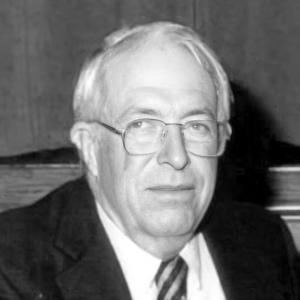
John Stewart Williamson (April 29, 1908–November 10, 2006), better known to readers as Jack Williamson, was born in Bisbee, Arizona Territory, a mining town steeped in frontier grit and burgeoning scientific ambition. This unique upbringing—a blend of rugged individualism and the promise of technological advancement—would profoundly shape his literary vision. He spent his early years moving between Sonora, Arizona Territory and Texas, absorbing the landscapes and cultures that would later populate his imaginative worlds.
Williamson’s formal education included a Master of Arts degree in English from Eastern New Mexico University. The Second Shell, published in Air Wonder Stories in 1929, is a fascinating snapshot of his early work and the anxieties of a world on the cusp of global conflict. It’s a pulp adventure steeped in espionage and nascent scientific dread, reflecting the era’s fascination with radio technology, secret agents, and the potential for both wonder and destruction within emerging fields like thorium research. The story stands as an important early example of blending hard science fiction elements with thriller pacing, foreshadowing many tropes that would become staples of the genre.
Williamson’s style was characterized by a meticulous attention to detail, often incorporating scientific concepts—however speculative—into his narratives. He wasn’t interested in pure fantasy; he sought plausibility, even within the most outlandish scenarios. This approach distinguished him from contemporaries like Robert E. Howard, whose work leaned heavily into heroic fantasy and mythic archetypes. While H. P. Lovecraft explored cosmic horror through atmosphere and dread, Williamson grounded his tales in a more pragmatic, problem-solving ethos. His characters were often scientists or engineers grappling with the consequences of their discoveries, facing moral dilemmas as much as physical threats.
He possessed a remarkable ability to create complex, internally consistent universes populated by diverse alien species and intricate social structures. This world-building talent became particularly evident in his later works, such as The Humanoids, where he explored themes of artificial intelligence, genetic engineering, and the very definition of humanity. Williamson’s prose wasn’t flamboyant or lyrical; it was measured, precise, almost clinical at times—a quality somewhat reminiscent of Frank Herbert’s attention to ecological and political structure in Dune. However, beneath this surface lay a poetic sensibility, a fascination with the interconnectedness of all things, and a deep concern for the future of civilization.
Throughout his prolific career, Williamson published over sixty novels and hundreds of short stories, earning him recognition as a Grand Master of Science Fiction. He left an indelible mark on the genre, inspiring generations of writers to explore the boundless possibilities—and potential perils—of tomorrow. His legacy continues to resonate in contemporary science fiction, reminding us that even amid technological marvels, the human element remains paramount.